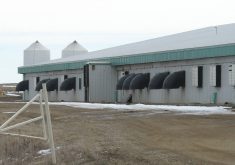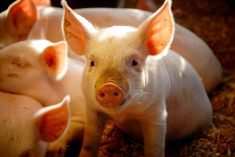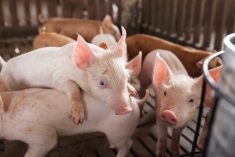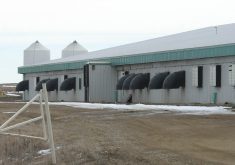Glacier FarmMedia – Hog producers are hunkered down for a tough year as reduced margins combine with trade chaos to create a cloudy outlook.
Yet beneath those stormy skies, hog farms continue to invest in open housing systems. They are building new barns, successfully tackling tough disease issues and setting bold targets for further improvements.
That was the message as the province’s pork producers gathered in Winnipeg April 11 for the Manitoba Pork Council’s annual general meeting.
Read Also
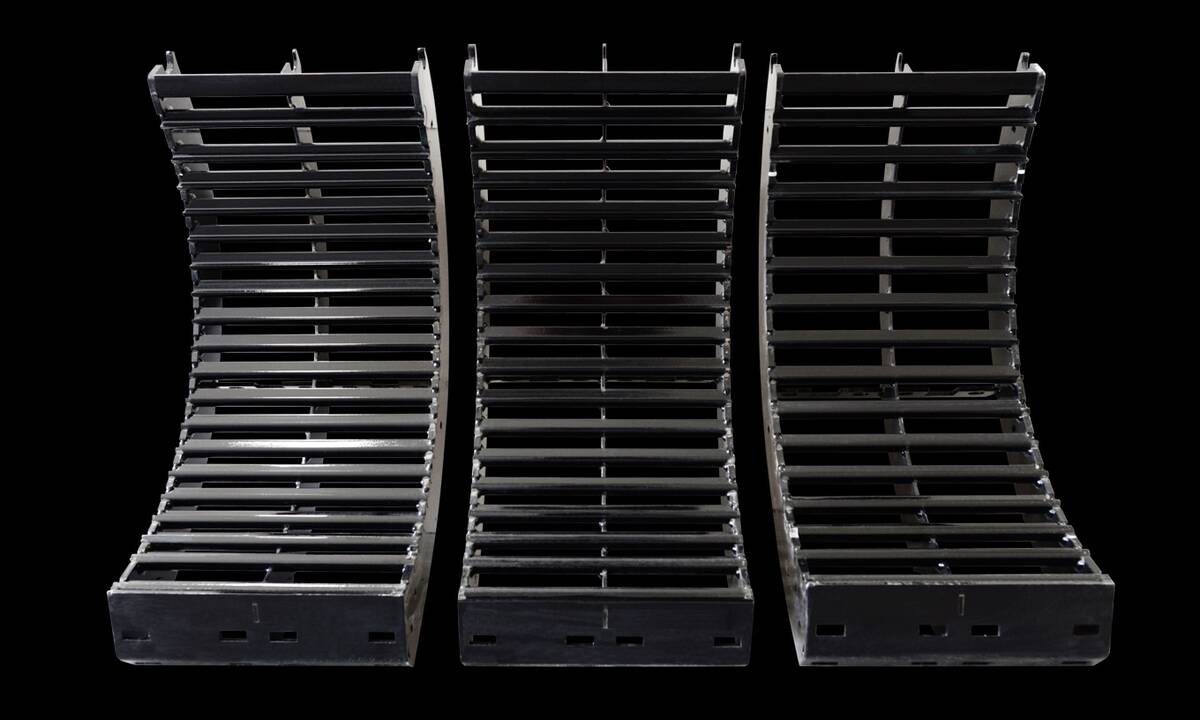
MANITOBA AG DAYS 2026: Stacked equipment category expected at Innovation Showcase
Ten of 28 Innovation Showcase entries at the Manitoba Ag Days 2026 farm show Jan. 20-22 in Brandon are in the equipment category.
The farm group’s chair, Rick Préjet, summed up last year’s mixed bag. He described 2023 as a “pretty challenging year,” but also said Manitoba is “still one of the best places in the world to grow pork.”
Disease
Disease concerns, a consistent theme for the pork sector, were once again paramount. The last 12 months saw the sector again grappling with porcine epidemic diarrhea. The province’s worst ever outbreak was wrapping up, with lingering cases reported in late January, early February and June.
The MPC tried to draw a line against PED last year. The virus is among the industry’s most pervasive health threats, with major outbreaks roughly every two years since 2017. The group set a goal to eliminate 96 per cent of PED cases in the high-risk zone of southeastern Manitoba by 2027. A finalized elimination plan to meet that goal was rolled out in mid-2023.
Seneca Valley virus was also a concern, and preparations for a potential future incursion of African swine fever occupied much time, as has been the case for pork producers nationwide for several years.
Money and markets
Relatively high feed grain costs underpinned producer anxiety in the past year, squeezing profitability from slaughter pig prices that otherwise would have offered a return.
For much the past year, hog prices were falling while feedgrain prices remained firm, producing disappointing financial results for many.
On the trade front, California’s Proposition 12 went into effect at the start of 2024. Producers, packers and retailers in the U.S. have attempted to set up Prop 12 compliant and non-compliant pig and pork streams.
According to American hog producer representatives at the MPC meeting, the big pork companies appear to have sufficient compliant pork to meet California’s needs, although impacts inside and outside California will probably take months to become clear.
Prop 12 requires pork sold in the state to be produced from open sow housing barns that have a large amount of per-pig space, a requirement much of the U.S. herd can’t meet.
Many Canadian barns have made the switch to group housing, but industry has repeatedly said it is unclear how well pigs from Canadian barns will fare against Prop 12 requirements. Industry has also raised concern over the precedent set on the harmonized U.S.-Canadian market.
On the horizon looms the U.S.’s voluntary Country of Origin Labelling system, which many in Canada fear could cause disruption, inefficiency and costs for pigs that move from one country to the other. Manitoba exports more than two million piglets per year, mostly sold to U.S. hog feeders in the Midwest.
With the new COOL set to ban pork from any pig born or partially raised in Canada from being called “Made in USA,” grocers and packers that want to use those labels are expected to eschew Canadian-born hogs. That may cause some hog feeders to avoid buying pigs from Canada.
Regardless of market chaos from Prop 12, demand for pork remains good, attendees heard. Pork prices have remained high for consumers, but the much higher price for beef has increased consumer demand for pork as inflation-strapped consumers switch to cheaper meats.
Trevor Sears, president of Canada Pork, said Canadian exports have been flat in recent years, but Manitoba’s have continued to grow.
“It’s pretty remarkable,” said Sears.
Wild pigs
Wild pigs continue to be a challenge. There is an ongoing campaign to eradicate the invasive species from Manitoba, backed heavily by the hog sector.
Wayne Lees, who oversees the Squeal on Pigs program, said control staff have been catching more than 100 pigs per year with traps customized for Manitoba’s challenging environment and its furtive pigs.
While many in the public fear there is an epidemic of wild pigs that will never be brought under control, Lees said he is confident Manitoba can become wild pig-free within 10 years.
– Ed White is a reporter with the Western Producer.




